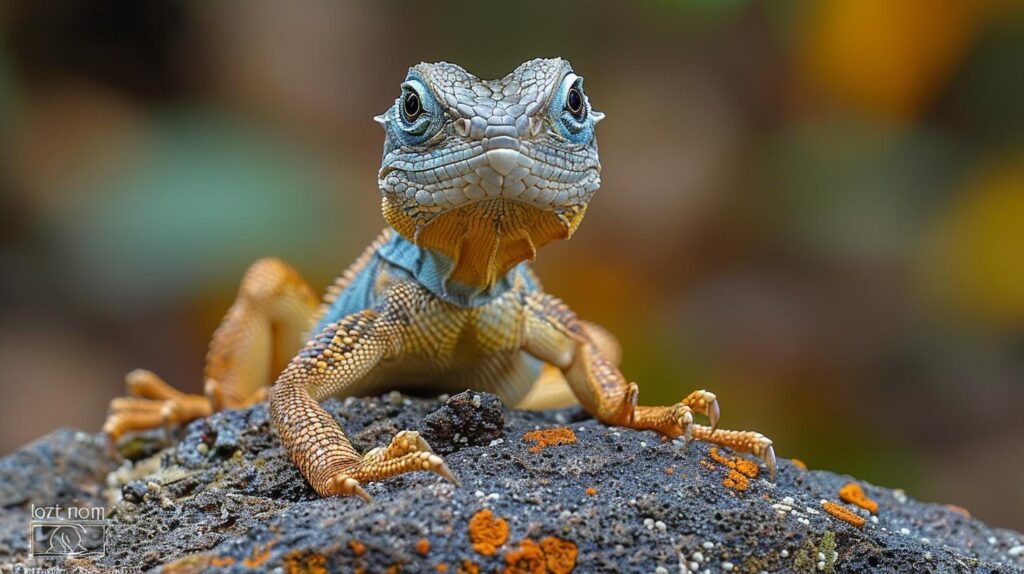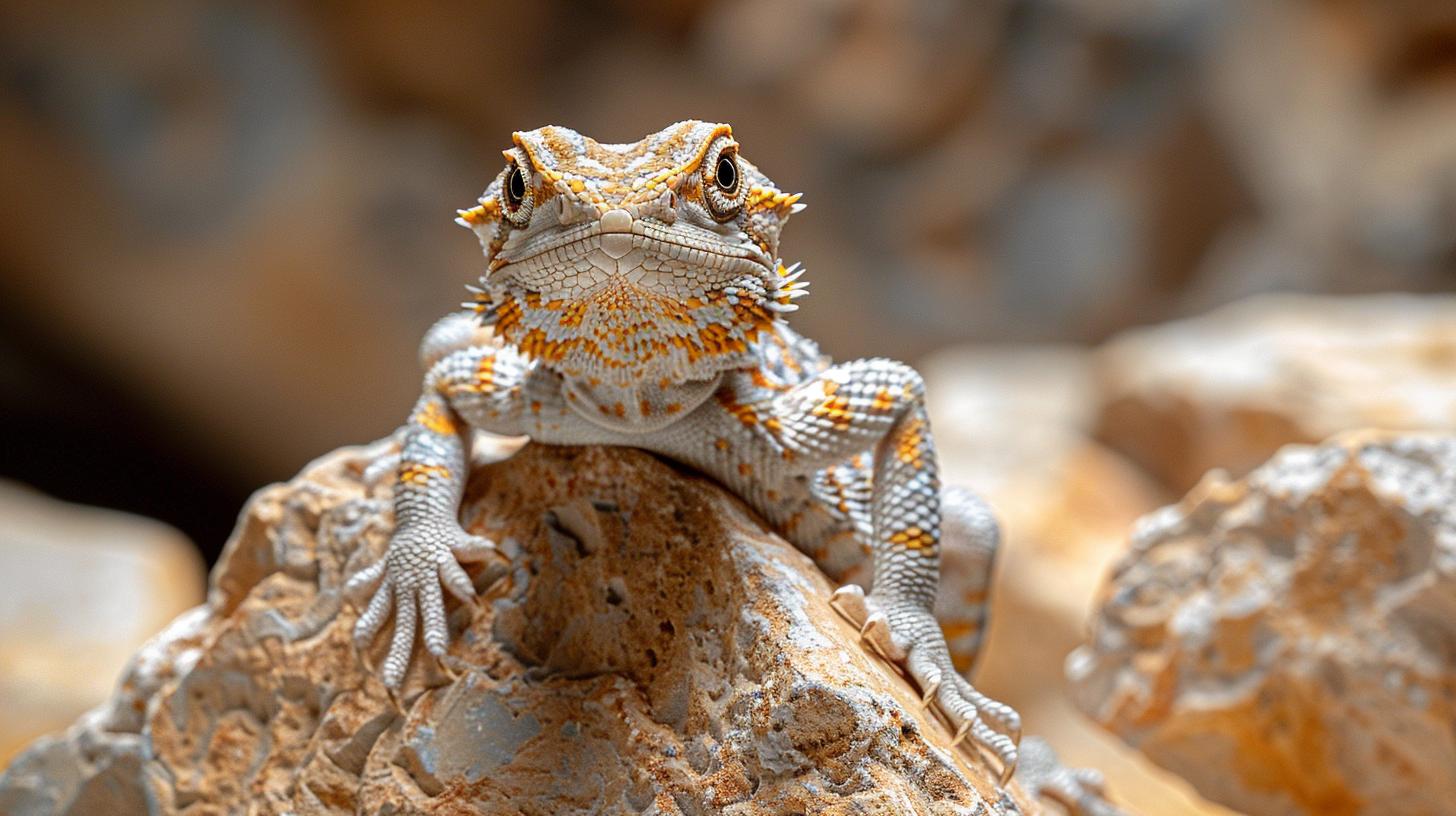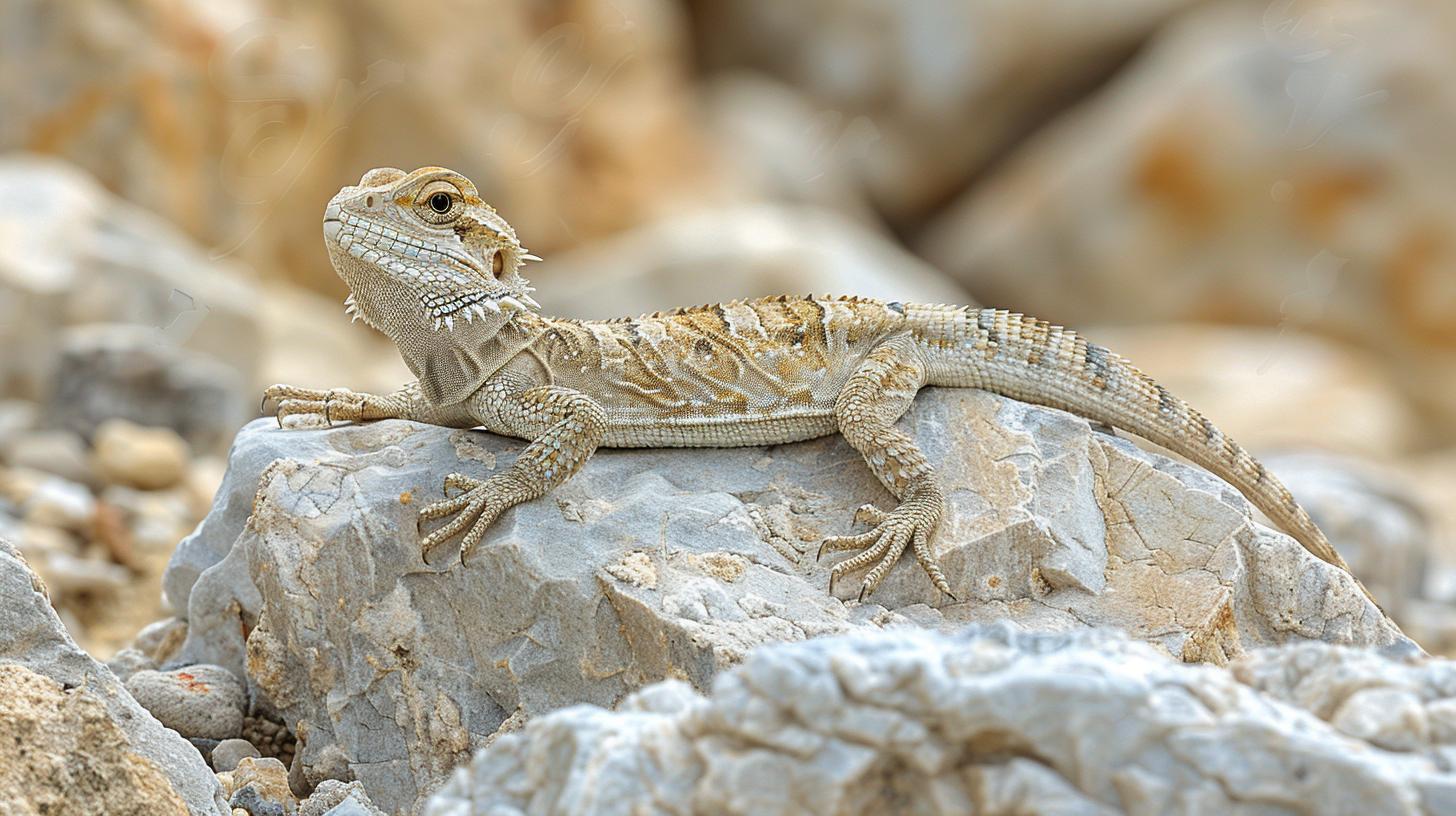Build Your Own Reptile Habitat: A Step-by-Step Guide

Understanding the Importance of a Proper Habitat
Creating a reptile habitat that closely mimics the natural environment of your scaly friend is not just a fun DIY project; it's a vital step to ensure their health and happiness. The journey to build reptile habitat begins with understanding the profound impact a well-crafted environment has on these creatures. By replicating conditions of their wild counterparts as accurately as possible, you provide more than just shelter-you offer them a slice of home.
Recognizing the critical needs of your reptile starts with an appreciation for their original habitats. Different species, whether they are snakes, lizards, or turtles, hail from diverse environments ranging from deserts to rainforests. Each species comes with its unique set of requirements concerning temperature, humidity, and lighting.
Understanding these specifics is crucial for anyone looking to create an ideal habitat. It determines everything from the size and type of enclosure you'll need to the kind of substrate that will keep your pet comfortable and healthy.
Venturing into habitat design requires mindful planning and a deep dive into the specific needs and behaviors of your reptilian companion. The deliberate selection of an enclosure that not only fits within your living space but also accommodates all facets of your pet's life is paramount.
Crafting spaces for basking, hiding, and exploring doesn't merely mimic their natural surroundings; it encourages normal behavior patterns which are essential for their physical and psychological well-being. This stage sets the foundation upon which all other elements rest-ensuring the success of this delicate balance between aesthetic appeal for you and functional habitat for them.
Knowing Your Reptile
When embarking on the journey to build a reptile habitat, a critical first step is cultivating a deep understanding of your reptile's specific needs. The diverse world of reptiles encompasses a wide range of habitats, from the dense, humid rainforests home to many species of lizards and snakes, to arid deserts where various tortoises and other reptiles thrive.
Each species has adapted to survive in its unique environment, which means that replicating those conditions as closely as possible in captivity is paramount for their health and happiness. Before delving into the specifics of habitat construction, it's essential for pet owners to devote time to researching the natural environments and behaviors of their particular reptile species.
The Essence of Proper Habitat Conditions
Achieving the right balance of temperature, humidity, and lighting tailored to your reptile can make all the difference in ensuring its well-being. For instance, tropical species like certain geckos require higher levels of humidity and warmer temperatures compared to desert-dwelling creatures such as bearded dragons.
Moreover, adequate lighting plays a crucial role not only in regulating your pet's day and night cycles but also in facilitating essential processes such as Vitamin D synthesis which is vital for bone health.
Failure to provide these conditions can lead to stress, health issues, and even premature death. Thus, emphasizing the importance of this foundation before proceeding with constructing their living quarters.
Understanding Reptile Requirements
Beyond environmental factors, recognizing physical and behavioral needs is equally important when planning your habitat design. Some species are arboreal (tree-dwelling), requiring tall enclosures with branches for climbing; others are terrestrial (ground-dwelling) or semi-aquatic needing different accommodations altogether.
Providing ample space for movement and exploration alongside areas for hiding allows reptiles to exhibit natural behaviors-this could include burrowing or basking under heat lamps depending on the time of day. Familiarizing yourself with these aspects will guide you in creating more than just a housing space; it helps craft a stimulating environment where your pet can flourish.
By starting with this comprehensive approach towards understanding your reptile's inherent nature and requirements, you're laying down a cornerstone that will enable you to effectively build reptile habitat setups that replicate their wild counterparts as closely as possible within your home. This deliberate preparation paves the way towards constructing a specialized ecosystem where your reptilian companion can live comfortably-a key factor that accentuates the joys and rewards of responsible reptile ownership.
Planning and Designing Your Habitat
Creating the perfect habitat for your reptile begins with thoughtful planning and design. This phase is critical, as it lays the foundation for a safe, comfortable, and stimulating environment that caters to your pet's specific needs. Before you build a reptile habitat, consider the size of the enclosure. It should be spacious enough to allow for normal behavior and movement. For instance, arboreal species require vertical space to climb, while ground-dwellers need more horizontal space to roam.
When designing your habitat, think about the micro-environments that your reptile would naturally inhabit. This involves setting up different areas within the enclosure that serve various purposes-for example:
- Basking area: A spot under a heat lamp where your reptile can warm itself.
- Cool zone: An area away from the heat source where your reptile can cool down.
- Hiding spots: Shelters where your reptile can retreat when stressed or desiring privacy.
Incorporating these elements not only makes for a happier pet but also encourages natural behaviors, enhancing their overall well-being.
Next on the agenda is selecting *substrates* and decoration items. The substrate is the bedding material used on the floor of the habitat. Its choice depends largely on the type of reptile you have; some may require sand for digging and burrowing, while others might thrive on softer substrates that retain moisture to help with humidity levels.
Decorations such as rocks, branches, and live plants not only add aesthetic appeal but also play an essential role in mimicking your pet's natural environment. They provide obstacles to navigate around or hide behind, contributing to physical exercise and mental stimulation.
To successfully build a reptile habitat that meets all these criteria takes careful consideration and preparation. Lists are incredibly helpful during this stage:
- Determine enclosure size based on species-specific needs.
- Choose an appropriate substrate based on tension between absorption capacity and risk of ingestion.
Gathering Your Materials
To build a reptile habitat that truly caters to the specific needs of your reptile, having the right materials on hand is crucial. This not only ensures the creation of a conducive and stimulating environment but also factors significantly into the health and well-being of your reptile pet.

The first step towards achieving this involves compiling a comprehensive list of necessary items that will help mimic their natural habitat as closely as possible. Below is a *curated selection* of essential materials you'll need:
- Substrates: Choose according to your reptile's natural habitat (e.g. coconut fiber for tropical species, sand for desert-dwellers)
- Heating equipment: Essential for regulating temperature; options include ceramic heat emitters, under-tank heaters, and basking lamps
- Lighting: UVB lighting is imperative for most reptiles to process calcium properly
- Thermometers and hygrometers: To monitor temperature and humidity levels within the enclosure accurately
- Decor: Including rocks, driftwood, and plants (both real and artificial) to provide hiding spots and simulate natural surroundings
Embarking on constructing your habitat begins with laying down an adequate substrate layer that acts as the base of your reptile's new home. Depending on your reptile's species, this can range from moisture-retaining substrates like sphagnum moss for amphibians to heat-conducting sand for desert species. Remember, choosing the right substrate not only aids in maintaining proper humidity levels but also plays a significant role in your pet's overall comfort.
Following this, setting up heating and lighting systems is critical. Reptiles are ectothermic; they rely on external sources to regulate their body temperature. Carefully install heating equipment in designated areas of the enclosure to create a thermal gradient allowing your reptile to thermoregulate effectively. Additionally, installing appropriate lighting, especially UVB lights for those needing sunlight exposure to synthesize vitamin D3, supports their overall health including bone development.
Final touches involve incorporating decor elements that provide both functional utility-for instance, basking spots-supporting essential behaviors like climbing or hiding but also aesthetic value making the enclosure visually appealing not just for you but stimulating for your reptile too. Strategically place these items to create an enriched environment where your pet can engage in natural behaviors.
As we progress further into how to effectively build a reptile habitat seamlessly integrating each component with attention-to-detail becomes invaluable as does embracing patience throughout this meticulous yet rewarding process.
Build Reptile Habitat
Creating the perfect environment for a reptile is not just a matter of aesthetics; it's a fundamental aspect of their care that directly impacts their health and well-being. With each species having its unique set of requirements, understanding how to build a reptile habitat that meets these needs is crucial.
This step-by-step guide is designed to simplify the process, breaking it down into manageable tasks that when executed correctly, lead to the creation of a functional and safe habitation for your scaled companion.
Starting off, one must comprehend that this task necessitates patience and precision. The goal is not only to craft an enclosure but to ensure it emulates the natural environment of your reptile as closely as possible. This involves meticulous planning and attention to detail from the very outset.
Selecting Your Enclosure
The first step in our guide commences with selecting an appropriate enclosure. The size and type of your enclosure will be dictated by the species you intend to house.
For instance, arboreal species will require tall enclosures that allow them to climb, whereas terrestrial species will need more floor space to roam. It's important to remember that while glass terrariums are popular choices due to their durability and visibility, other options like PVC or wooden enclosures can offer better insulation for maintaining temperature gradients-a critical component in replicating your pet's natural habitat.
Installing Substrate and Landscaping
The next phase involves installing the substrate and arranging the landscape within your enclosure. The choice of substrate-ranging from paper towels for easy cleaning to more natural options like coconut fiber or bark-depends on the humidity requirements of your pet as well as ease of maintenance from your perspective. After laying down the substrate, you'll move on to landscaping.
This includes adding vegetation (real or artificial), branches for climbing, rocks for basking, and hideouts where your reptile can retreat for security and privacy. Each element plays a significant role in creating not just a habitat but a home where your reptile feels comfortable and stress-free.
Setting Up Heating, Lighting, and Humidity Control
Proper heating, lighting, and humidity are paramount in creating an environment wherein reptiles can thrive. Installing under-tank heaters or ceramic heat emitters helps maintain optimal temperatures throughout the enclosure while mimicking natural sunlight through full-spectrum UV lights supports vitamin D synthesis necessary for calcium absorption-an essential factor in preventing bone diseases such as metabolic bone disease commonly seen in captive reptiles.
Furthermore, regulating humidity levels through misting systems or manual spraying ensures respiratory health is maintained while also aiding in the shedding process.
To successfully build a reptile habitat, adherence to these guidelines allows one not merely to construct an enclosure but also bridges gaps between captivity and wild conditions essential for preserving both physical health and behavioral wellness among pet reptiles. Each step requires careful consideration yet paves way towards establishing an enriching living space tailored distinctly around your pet's needs-significantly contributing towards their longevity under human care.

Setting Up Your Reptile's New Home
| Consideration | Detail |
|---|---|
| Acclimation Time | Varies by species; monitor behavior closely. |
| Temperature and Humidity Levels | Adjust according to species-specific needs. |
| Daily Observation | Check for signs of stress or discomfort. |
Introducing your reptile to its new home requires careful observation and patience to ensure a smooth transition. Once you *build a reptile habitat*, acclimating your pet becomes the immediate focus. The adjustment period can vary significantly among different types of reptiles, but several universal principles apply.
It's vital to give your reptile space, limiting handling in the initial days to reduce stress. As tempting as it might be to interact with your new pet, this period of minimal disturbance is critical for its well-being.
Monitoring the habitat conditions becomes your daily ritual during this phase. Precise control over temperature and humidity levels is necessary for mimicking your reptile's natural environment as closely as possible. Use reliable thermometers and hygrometers to check these parameters regularly, making adjustments as required. This not only caters to your pet's physical health but also aids psychological comfort, encouraging natural behaviors that indicate a healthy adjustment.
Observing your reptile's behavior provides valuable clues about its comfort level in the new habitat. Signs of stress may include reduced appetite, aggression, or attempts to escape. If such behaviors persist, reviewing the setup details might highlight areas needing improvement.
It could be something as simple as repositioning the basking spot or adjusting the light cycle to better align with your pet's natural rhythms. At this juncture, patience and attentiveness are paramount; remember that every change should aim at creating an environment where your reptile feels secure and thriving.
Transitioning into more intricate care aspects without concluding this crucial adjustment period leaves ample room for continuous learning and adaptation on both sides-the keeper's and the pet's. Ensuring that a sound foundation has been laid paves the way for a harmonious coexistence along with excitement about deepening mutual understanding in subsequent chapters of habitat management and enhancement.
Maintenance and Cleaning
In wrapping up our guide on how to build a reptile habitat, it's clear the journey from understanding the critical importance of a proper habitat to effectively maintaining and cleaning your reptile's new home encapsulates not just a labor of love but also a commitment to ensuring the health and happiness of your scaly companion.
The intricate process of recreating a slice of the natural world within your home holds the key to providing a sanctuary for your pet where it can thrive.
Through carefully selecting materials, crafting an environment tailored to your reptile's unique needs, and attentively observing its adaptation, you partake in an invaluable practice that strengthens the bond between you and your beloved reptile.
Equally significant is the ongoing dedication required in upkeep through routine maintenance tasks. These efforts are imperative in preserving an optimal living environment that continues to reflect the natural habitat as closely as possible, paying homage to the undeniable essence of what makes building your own reptile habitat so fulfilling. Remember, every choice made along this journey - from substrate selection to temperature controls - plays a pivotal role in mimicking those conditions essential for your reptile's well-being.
We invite you to continue exploring our site for more insightful articles and guides that delve into creating nurturing environments for all species under your care. Whether you're looking to broaden your understanding, embark on new projects like building another reptile habitat, or simply seeking tips for better caregiving practices, our plethora of resources stands ready to support you every step of the way.
Dive into our content library today and turn curiosity into expertise as you forge deeper connections with the natural world right from within the confines of your home.
Frequently Asked Questions
Can You Build Your Own Reptile Enclosure?
Yes, you can build your own reptile enclosure, offering a tailored environment that suits the specific needs of your reptile pet. Crafting it yourself allows for customization in size, shape, and features according to the type of reptile you have. It requires some planning and a bit of DIY skill but is definitely achievable with the right tools and materials.
What Is the Best Material to Build a Reptile Enclosure?
The best material for building a reptile enclosure depends on several factors including durability, heat resistance, and safety for the animal. Glass is popular for its transparency and ease of cleaning, while PVC panels are valued for their lightweight, insulation properties, and versatility in design. Wood can also be used but must be sealed properly to prevent moisture damage.
How Do You Set Up a Reptile Habitat?
Setting up a reptile habitat involves creating an environment that mimics the natural conditions of your pet’s native habitat as closely as possible.
This includes installing a suitable substrate for bedding, ensuring proper thermal gradients by setting up heating elements on one side while keeping the other cooler, providing adequate lighting (including UVB lights if necessary), incorporating hides or shelters for security, and setting up water sources and humidity controls as required by the species.
What 5 Basic Things Are Needed to House a Reptile?
When housing a reptile, five basic requirements should be met: proper heating to maintain appropriate temperature gradients; lighting, which may include UVB lamps depending on the species; humidity control to replicate their natural environment; substrate suitable for digging or burrowing as necessary; and enrichments such as plants or branches to simulate their natural habitat and encourage natural behavior.
What Is the Most Fun Reptiles to Own?
The most enjoyable reptiles to own often depend on personal preference along with considerations of care level and space requirements. Bearded dragons are frequently noted for their friendly nature and manageable size making them enjoyable companions. Leopard geckos also rank high due to their docility and relatively easy care requirements.
Can I Use Plexiglass for a Terrarium?
Plexiglass can indeed be used for a terrarium since it's lightweight and offers clear visibility into the habitat. However, one must consider its lower heat tolerance compared to glass, which may become an issue with certain heating elements or lightbulbs used within close proximity to the enclosure walls.
Always ensure that materials chosen do not pose any risk of harm through melting or releasing toxins when heated.
Leave a Reply
You must be logged in to post a comment.